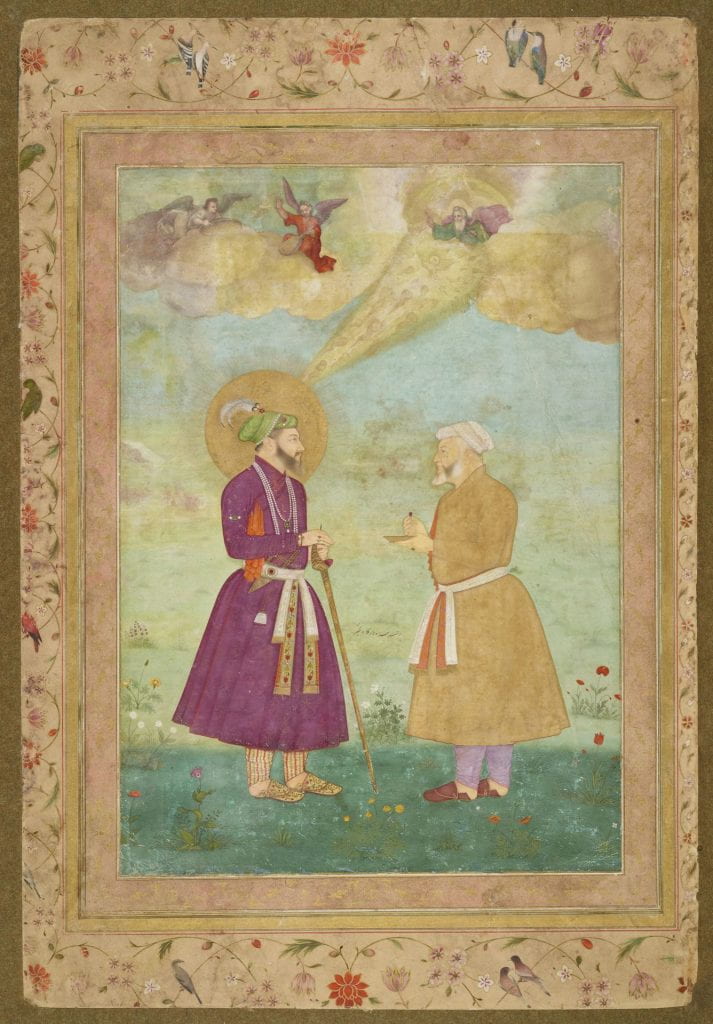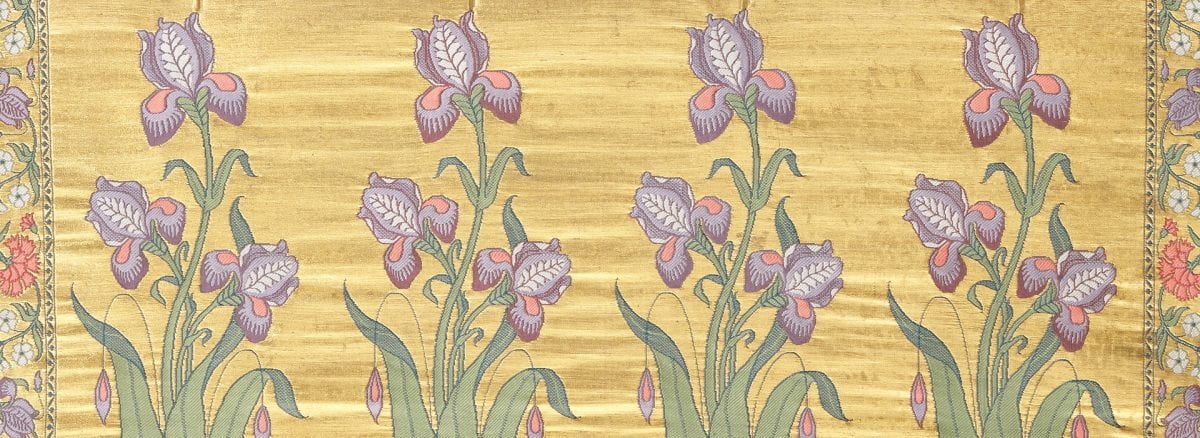In the 1990s, Rahul Jain quit his job as an economist at the World Bank and moved back to India to establish a traditional hand weaving workshop, called Asha. Jain spent four years researching, building and mastering historical draw looms from the 17th and 18th centuries to recreate the resplendent silks of the Mughal and Safavid courts.
This beautiful sash from Jain’s workshop is inspired by the masterful “patka” sashes of Mughal India. Elite men typically dressed in knee-length tunics with the patka worn folded in half lengthwise and tied around their waist. Men sometimes tucked a dagger, purse or other small objects into its folds.

The design of Jain’s contemporary sash also reflects the influence of Safavid Iran. The gleaming gold end panels apply the same technique as 17th- and 18th-century silks made for the Safavid court (metal-wrapped supplementary weft). Delicate irises, carnations and jasmine flowers are woven in a Safavid style and palette.

Detail of sash.
When the sash is tied, the four irises on either end face one another, and the heavy metal threads facilitate an even drape. The fabric’s smooth, glowing surface is reminiscent of jewelry. Jain calls patkas like this one “minakari” in reference to the enameled jewelry and other decorative objects produced in the Mughal period.


